What is 4K & Ultra HD (UHD)?
4K technology seems to be on the cusp of taking over the HD digital media world, from TV screens to computer monitors to cameras and projectors, 4K screen resolution and all of its accompanying features are starting to circulate widely.
But, you might be wondering, what exactly is 4K and why is it something you should care about? Well, we’re going to cover exactly that here and give you an overview of all the critical information about 4K ultra-high definition that you need to know as a potential buyer.
Currently, the best display of UHD technology is the 4K resolution TV and many of these have been emerging on the market since mid-2013, although 4K monitors have been around since 2013 and 4K resolution film and photo cameras commercially since at least 2012.
4K display has to consist of at least 3,840 pixels (horizontal) x 2,160 pixels (vertical) of resolution and the horizontal can go above 4,000 pixels. This puts it on the top of the current scale of digital resolutions in which the bottom is occupied by standard definition TV (450X540 pixels), HD with 720 pixels and full HD at 1080p.
In simplest terms, if you measure HD resolution by vertical pixel height (720p, 1080p) then 4K UHD can also be called 2160p.
As you can see, 4K outstrips its best HD predecessor by a very wide margin in creating a resolution profile that’s two times wider and two times higher than 1080 HD, thus giving a total screen resolution that’s 4 times larger overall, thus its name, 4K or, as it used to be called, Quad HD.
However, in a more specialized context, proper 4K is what is most often found as a digital camera resolution standard that involves an actual 4,096 x 2160 pixel resolution at an aspect ratio of 1.9:1 (horizontal: vertical) as opposed to common TV based 3,840p width and aspect ratios of 16:9 or 1.78:1.
Basically, regardless of the fact that 4K TV is officially defined as UHD, you’re buying into the same thing whether you see either 4K or Ultra HD used to describe a TV, monitor or film/Photo camera.
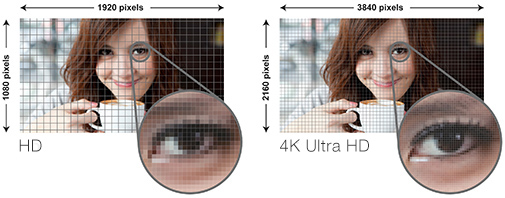
While the origins of 4K film go back quite a ways and have their roots in theatrical releases of films such as Blade Runner: The Final Cut back in 2007, it wasn’t until James Cameron filmed his now famous “Avatar” in 4K resolution that the projection platform itself was widely introduced in many theaters eager to please audiences with beautiful crystal screen clarity.
However, going from theaters to something like home entertainment is a big leap and it wasn’t until just within the last couple of years that both projectors and the already mentioned TVs became widely available for home theater system set up that would let consumers enjoy UHD clarity in their houses.
Now, in terms of TV 4K systems, this resolution isn’t even entirely noticeable unless you enjoy a very large and thus very expensive screen or are sitting abnormally close to your TV. However, when it comes to projectors, the power offered by 4K really does become visible.
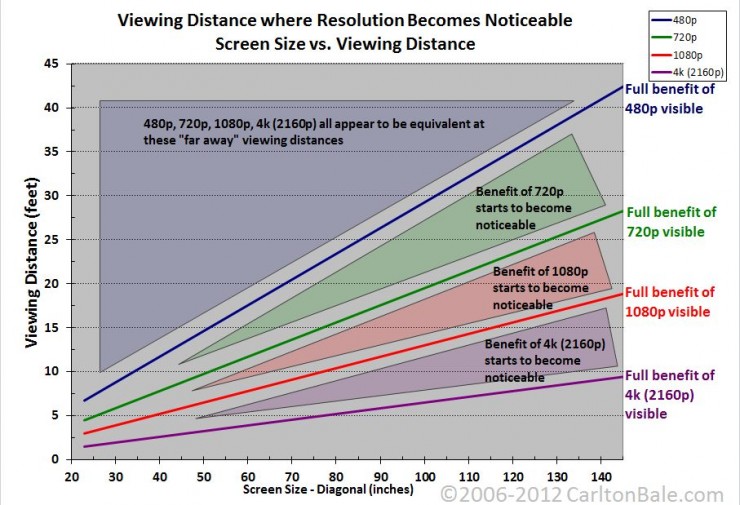
Most 4K projectors offer at least 4,096 x 2,160 pixels of resolution and because they typically offer projection area sizes that totally dwarf all but the largest 4K TVs, this is where you really notice the difference between UHD and regular HD content.
With a projector showing native 4K content or even upscaled 1080p HD content, you finally get to experience picture clarity in your own home that imitates on a smaller scale what you’d find with a large UHD public theater screen.
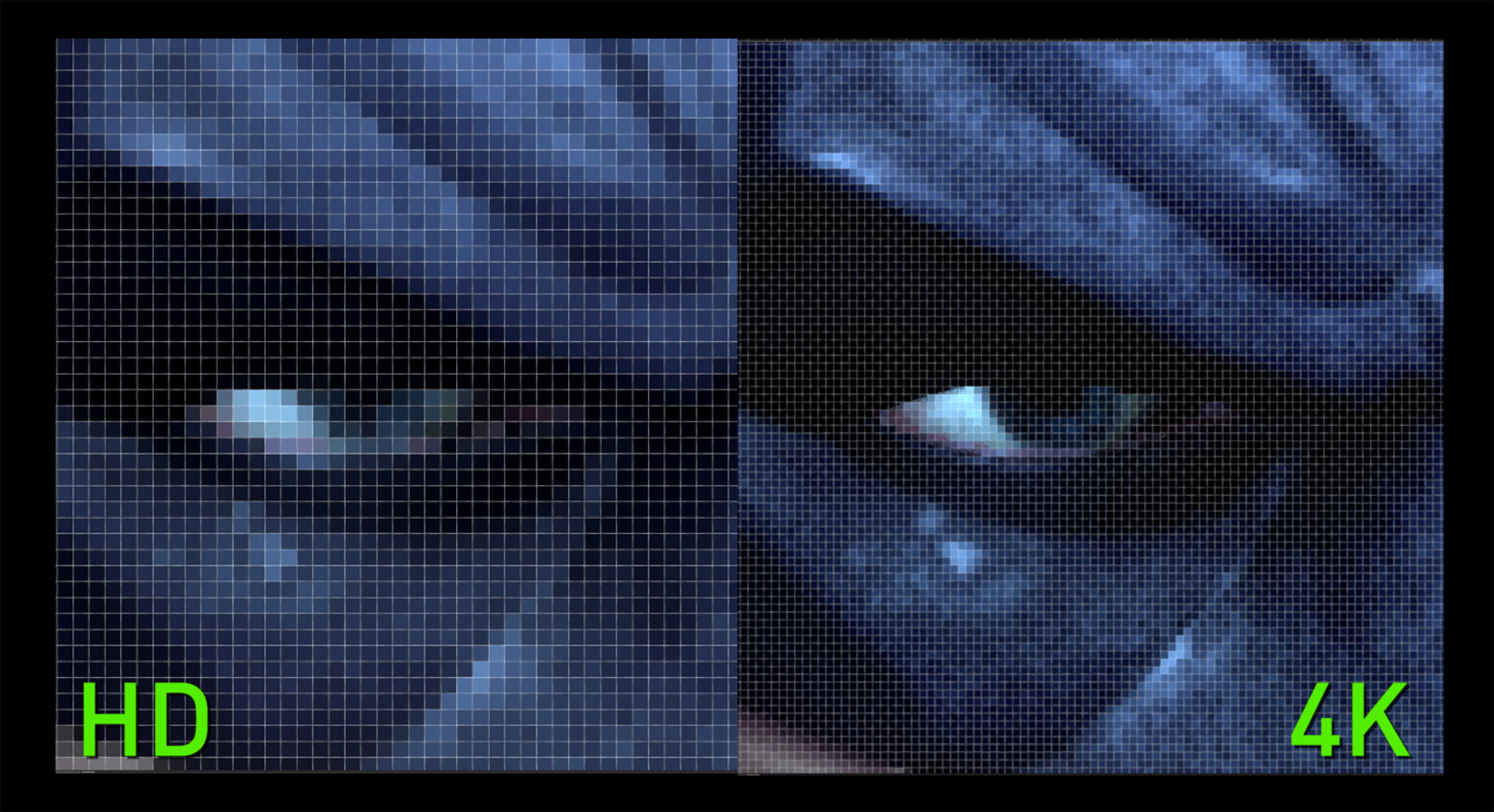
But, you might be wondering, what exactly is 4K and why is it something you should care about? Well, we’re going to cover exactly that here and give you an overview of all the critical information about 4K ultra-high definition that you need to know as a potential buyer.
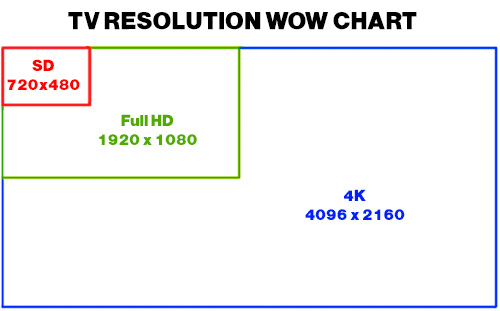
What Exactly Is 4K?
4K, officially known as UHD (Ultra-High Definition), is an overarching term that encompasses visual resolution technology which offers more pixels than regular HDTV (at least 4 times more pixels and thus the name 4K). The ultimate result of this increased pixel breakdown is a an image clarity that goes well beyond conventional 1080 pixel HD resolution and presents more vibrant, varied and realistic colors as well as much higher frame rates.Currently, the best display of UHD technology is the 4K resolution TV and many of these have been emerging on the market since mid-2013, although 4K monitors have been around since 2013 and 4K resolution film and photo cameras commercially since at least 2012.
4K display has to consist of at least 3,840 pixels (horizontal) x 2,160 pixels (vertical) of resolution and the horizontal can go above 4,000 pixels. This puts it on the top of the current scale of digital resolutions in which the bottom is occupied by standard definition TV (450X540 pixels), HD with 720 pixels and full HD at 1080p.
In simplest terms, if you measure HD resolution by vertical pixel height (720p, 1080p) then 4K UHD can also be called 2160p.
As you can see, 4K outstrips its best HD predecessor by a very wide margin in creating a resolution profile that’s two times wider and two times higher than 1080 HD, thus giving a total screen resolution that’s 4 times larger overall, thus its name, 4K or, as it used to be called, Quad HD.
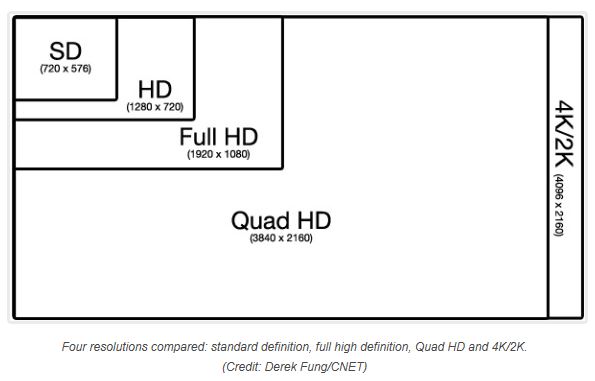
4K and UHD, Differences?
Now, we’ve been using the terms 4K and UHD interchangeably so far and while they basically are interchangeable at the commercial level, they do actually also mean slightly different things. While most UHD that you’ll find on TV screens is actually 3,840 pixels as mentioned above, it still gets called 4K because it does after all offer 4 times the resolution profile of regular HD.However, in a more specialized context, proper 4K is what is most often found as a digital camera resolution standard that involves an actual 4,096 x 2160 pixel resolution at an aspect ratio of 1.9:1 (horizontal: vertical) as opposed to common TV based 3,840p width and aspect ratios of 16:9 or 1.78:1.
Basically, regardless of the fact that 4K TV is officially defined as UHD, you’re buying into the same thing whether you see either 4K or Ultra HD used to describe a TV, monitor or film/Photo camera.

Moving 4K into Home Theater
While the origins of 4K film go back quite a ways and have their roots in theatrical releases of films such as Blade Runner: The Final Cut back in 2007, it wasn’t until James Cameron filmed his now famous “Avatar” in 4K resolution that the projection platform itself was widely introduced in many theaters eager to please audiences with beautiful crystal screen clarity.
However, going from theaters to something like home entertainment is a big leap and it wasn’t until just within the last couple of years that both projectors and the already mentioned TVs became widely available for home theater system set up that would let consumers enjoy UHD clarity in their houses.
Now, in terms of TV 4K systems, this resolution isn’t even entirely noticeable unless you enjoy a very large and thus very expensive screen or are sitting abnormally close to your TV. However, when it comes to projectors, the power offered by 4K really does become visible.

Most 4K projectors offer at least 4,096 x 2,160 pixels of resolution and because they typically offer projection area sizes that totally dwarf all but the largest 4K TVs, this is where you really notice the difference between UHD and regular HD content.
With a projector showing native 4K content or even upscaled 1080p HD content, you finally get to experience picture clarity in your own home that imitates on a smaller scale what you’d find with a large UHD public theater screen.

